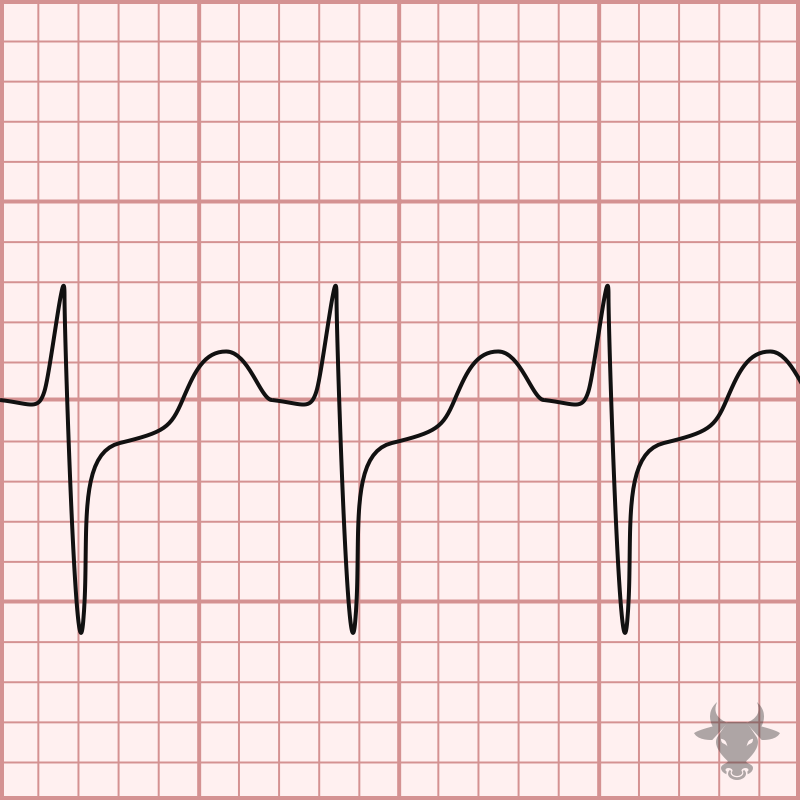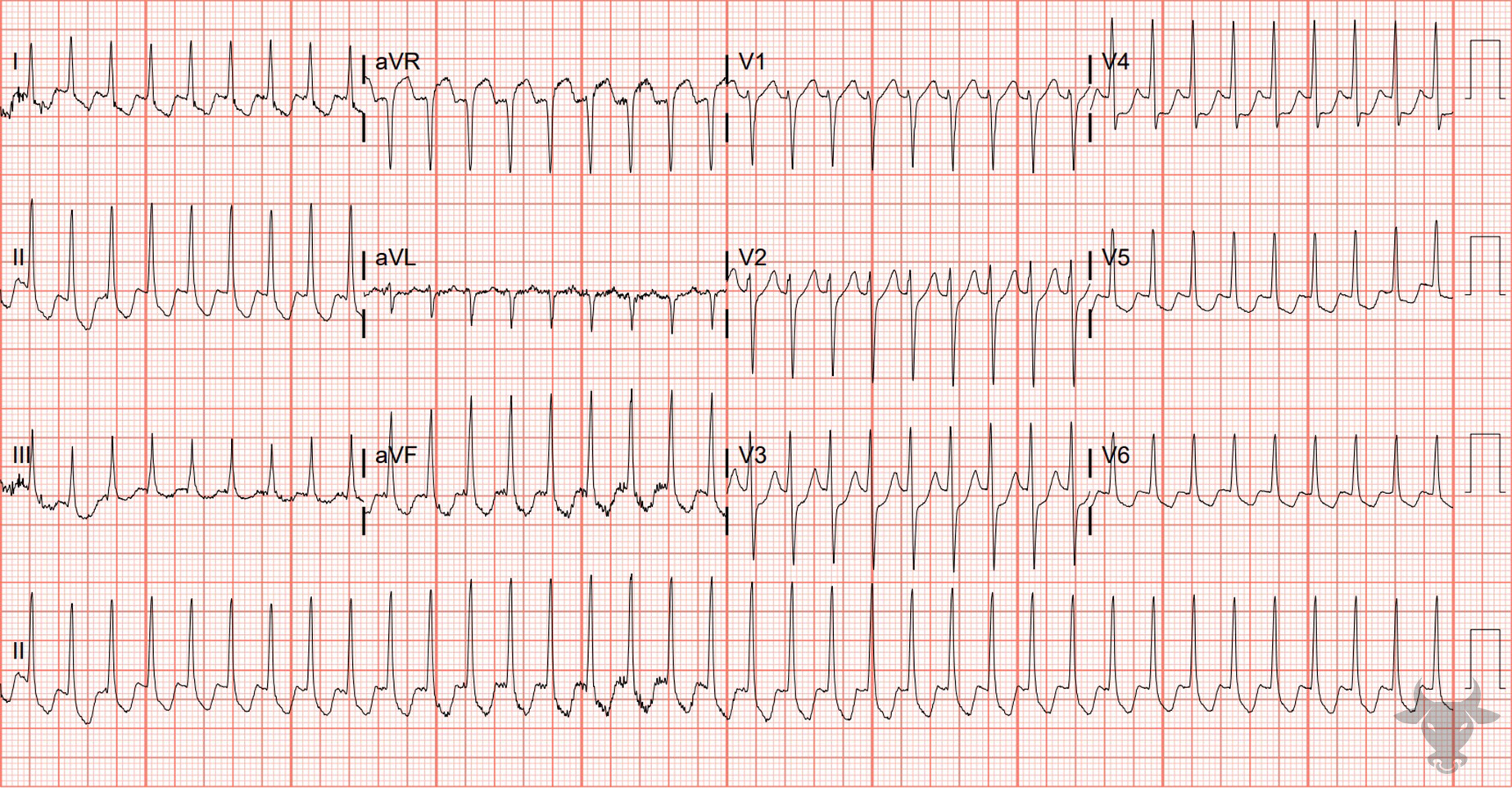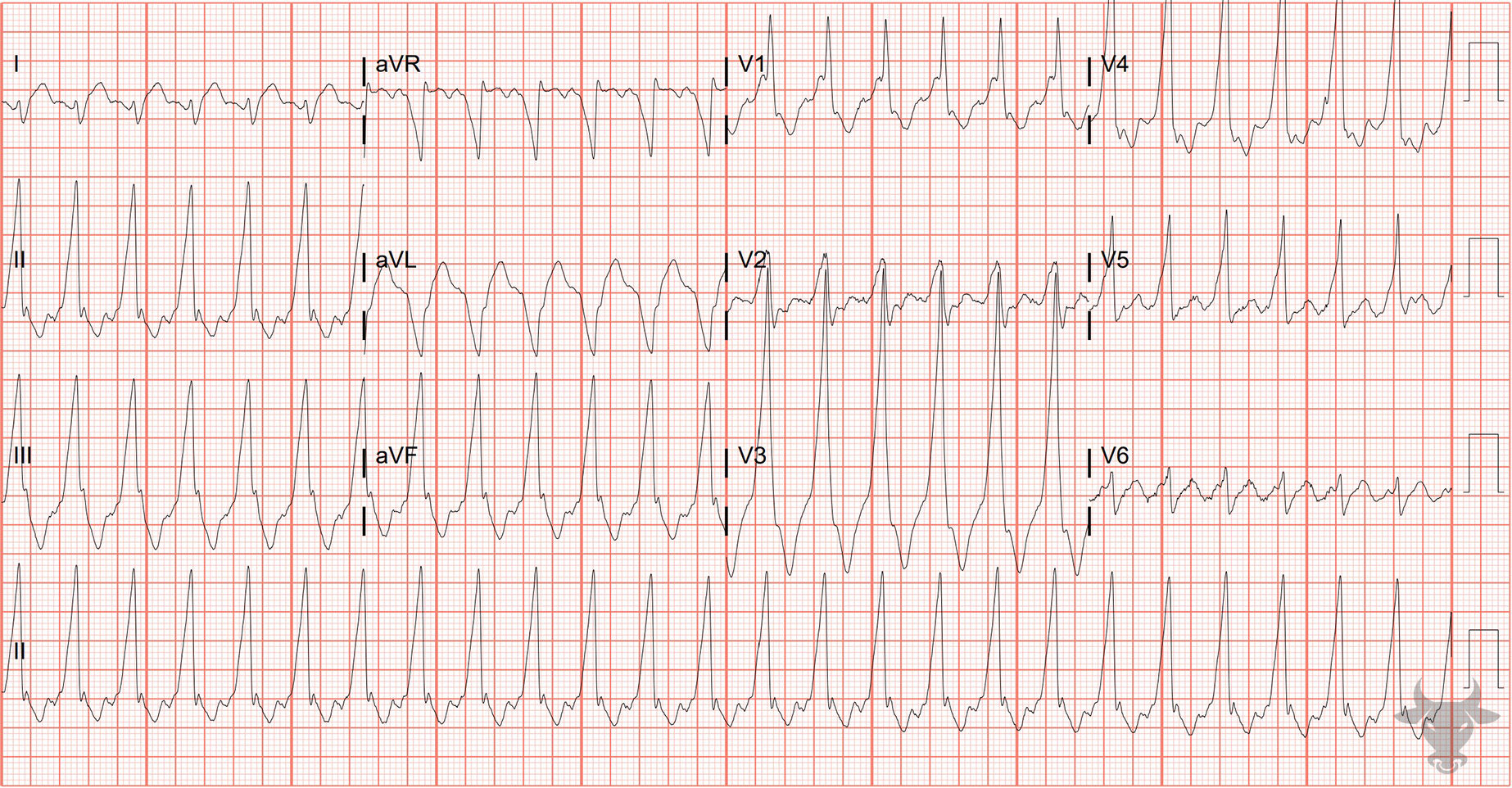Atrioventricular reentrant tachycardia, or atrioventricular reciprocating tachycardia, is a type of supraventricular tachycardia in which an accessory pathway provides an abnormal connection between the atria and ventricles. Patients with an accessory pathway are at risk for developing antidromic (wide complex, anterograde conduction through the accessory pathway and retrograde conduction through the atrioventricular node) or orthodromic (narrow complex, anterograde conduction through the atrioventricular node and retrograde conduction through the accessory pathway) reentrant rhythms. When dysrhythmias occur involving the accessory pathway, it is referred to as the Wolf-Parkinson-White syndrome.

Depiction of orthodromic and antidromic atrioventricular reentrant tachycardias possible with the Wolf-Parkinson-White syndrome. The red bars in panel A represent possible locations of the accessory pathway (type A, between LA and LV; type B, between RA and RV). The blue line in panel B represents orthodromic conduction (narrow complex) and the blue line in panel C represents antidromic conduction (wide complex). RA, right atrium; RV, right ventricle; LA, left atrium; LV, left ventricle.



